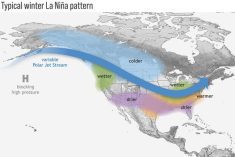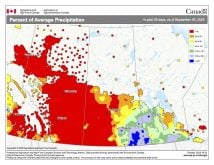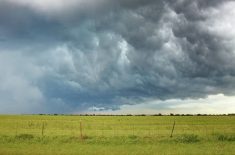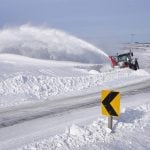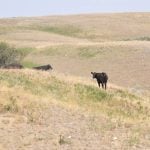In September, most regions across Alberta saw temperatures that were a good 2 C to 4 C above the long-term average. Central and northern regions were fairly dry as well, making it a very nice September for those areas. Over southern regions temperatures were probably the warmest, but along with warmer temperatures came a little more precipitation, with the Calgary area seeing nearly 45 mm of rain during the month. Overall though, September was pretty darned nice!
Then came October… it must have had terrible weather, right?
In reality, it probably wasn’t as bad as you thought. Only the last few days of the month were kind of terrible, but overall, it really wasn’t that bad. October saw a bit of a see-saw in temperatures, with highs climbing into the mid-teens for a few days and then dropping off into the single digits for a day or two before swinging back up into the mid-teens. This pattern continued right through to the last few days when a strong storm system brought the first real taste of winter to most regions, either in the way of snow and cold temperatures or just cold temperatures.
Read Also
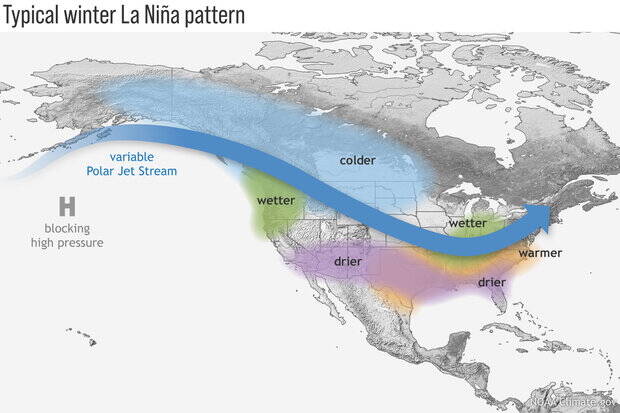
Forecasting winter 2025-26 in the Prairies
Weather expert Daniel Bezte looks at predictions for the coming winter on the Prairies.
When all of the numbers were added up it turns out that the Edmonton region recorded a mean monthly temperature of around 4.2 C, which is pretty much bang on with the long-term average. Farther south in the Calgary region it was understandably a little milder, with a mean monthly temperature of 5.7 C — also nearly right on the long-term average. So, overall, October, even with the cold end to the month, saw near-average to even slightly above-average temperatures in pretty much all regions.
October’s pattern of precipitation saw above-average amounts in the northern regions along with the west-central and southern regions. Calgary was in this wetter-than-average region and recorded around 25 mm of precipitation, which is nearly double the amount usually expected in October. The zone stretching from the Peace River region southeastward into the southeast corner of Alberta saw below-average amounts. Edmonton recorded only around 12 mm of precipitation, which is about 50 per cent of October’s long-term average for this area. Elsewhere, amounts were right around average.
November forecasts
Now let’s see what the different November forecasts are calling for. According to Environment Canada, November 2013 will see below-average temperatures along with near-average precipitation for all regions, except the northeastern region which will see above-average amounts. The best chances for below-average temperatures will be in the western regions.
The Old Farmer’s Almanac is calling for above-average temperatures and near-average precipitation. Over at the Canadian Farmers Almanac, it is less optimistic. It is calling for well-below-average temperatures with the mention of cold conditions several times, along with above-average amounts of snow.
Finally, here at Alberta Farmer, I am calling for temperatures to be above average in southern and eastern regions of Alberta, with western regions seeing below-average temperatures and northern regions seeing near-average temperatures. There are some hints at colder weather moving into all regions during the second half of the month, but the overall trend over the last week or so is towards milder conditions, with the exception of the far west.
Precipitation is always the toughest thing to predict for any month and November is probably one of the hardest months as we transition from fall into winter. With that in mind, it currently looks as if November will see below-average precipitation as the pattern does not look to be that active over the next couple of weeks. If we do see a transition to cold weather for the second half of the month, these transitions are usually accompanied by a day or two of stormy weather which could bring significant amounts of precipitation, but that’s a lot of “ifs” so I will just stick with my original forecast.
Next issue we’ll take a longer look ahead and see what the different forecasters are calling for the rest of the winter.



